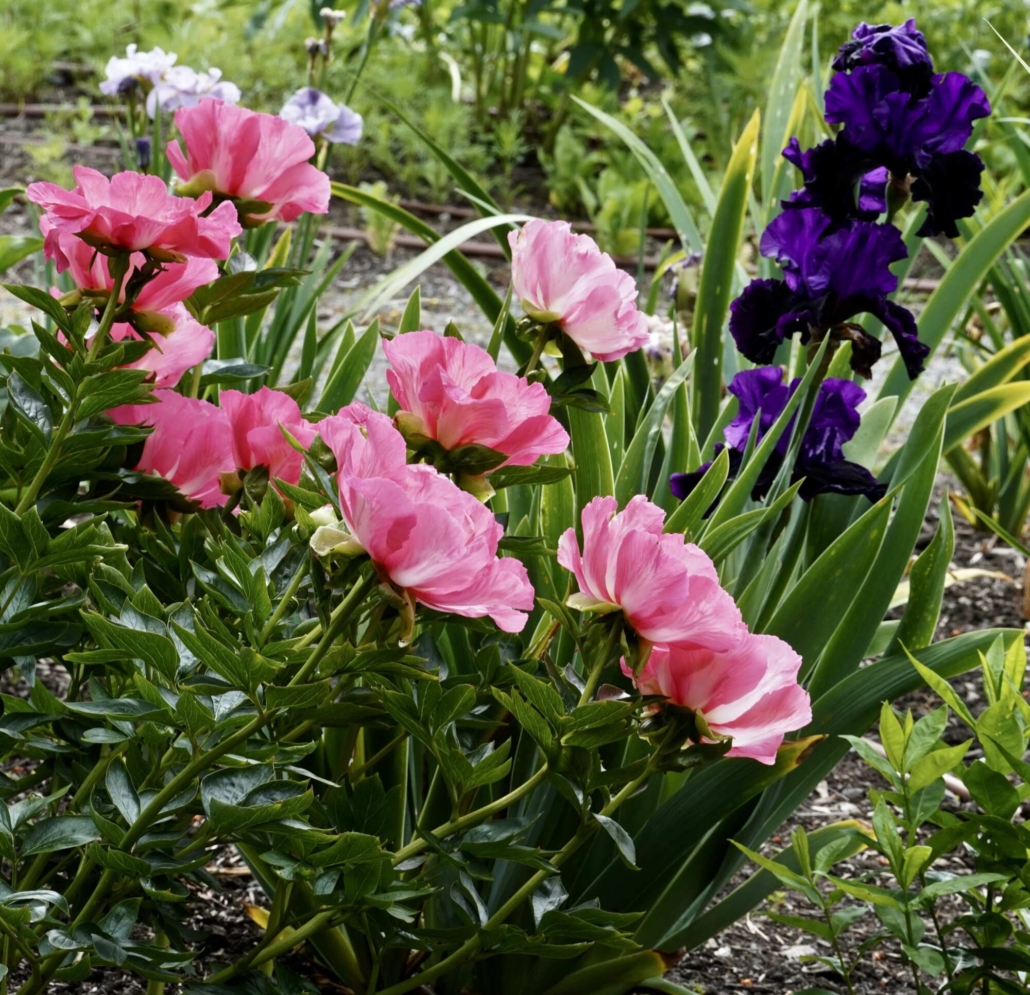Special Topics in Horticulture: Cut Flower Gardening & Arranging
Cut Flower Gardening & Arranging
Student Blog Post by Christopher Bruce and Robin Sundberg
On June 13, 2022, we had the pleasure of being taught about cut flower arranging by Emily Drolet. Cut flower arrangement is a delicate, precise art form that has many applicable uses. Arrangements can make beautiful table centerpieces, romantic gifts for your significant other, graduation presents, and so much more. This class helped us open our eyes to the process of flower farming, types of arrangements, and the practical side of cut flower businesses.
Flowers that are grown for the intent of being used in arrangements have been meticulously planted and cared for. For a long time, flowers have been central in many peoples' lives. There has been plenty of time to perfect the art of growing flowers, and many commercial flower farms utilize effective techniques to maximize the health and output of these flowers. Cut flower gardens prioritize flowers, with the intention of harvesting them. Most cut flowers require full sun, which means many flower farms are situated in large fields. However, there is much more to worry about than the sun exposure; to grow healthy flowers, a loamy, well- drained, organic matter-rich soil is needed.
Cutting gardens require a lot of maintenance, just like any other garden. Some flowers that we appreciate so much have been trained, specifically to increase bloom size or quantity. Many flower farms or gardens make extensive use of irrigation systems, specifically ones containing drip lines. To have a reliable source of income throughout the year, most flower farms plant multiple species of flowers throughout the year to secure a constantly full field.
Flowers are harvested right as they start to open. This increases the flower's vase life. Flowers are also cut with a long stem, to allow the arrangement designer to have as many options with the flower's length as possible. Sanitation is also extremely important in this process, as cut flowers can easily pick up bacteria or be infected with disease. Flowers are immediately transferred into clean water once they are harvested, and held in a cool location away from direct sunlight.
Once these flowers have been successfully harvested, they are ready to be purchased by designers or arrangers for use. There are a vast amount of arrangement types and methods. A few that were mentioned in the class include:
Centrepieces: Centrepieces can make a beautiful addition to a table. Centrepieces are designed to be viewed from many angles, so that must be taken in to account when arranging the flowers inside.
Small accent pieces: In these pieces, small vases are used to create versatile arrangements that can be placed in many locations.
Wearables: Flowers can be used to create wearable accessories, like pins and corsages.
Bouquets: Bouquets are the classic flower arrangement. These arrangements can vary in size, and can be designed for many different purposes.
At the end of the class, we had the pleasure of designing our own floral arrangements to practice. It was a very fun experience! For any floral arrangement, attention must be paid to make sure the colours and textures of the flowers and foliage complement each other. Additionally, many of these arrangements include foliage from certain plants to accent the appearance of the flowers. Popular types of foliage include salal, sword fern, and rosemary. This class displayed the intricacies of cut flower arrangement and gardening. It is a very beautiful and detailed art form, but it enriches our by spreading happiness and joy.



